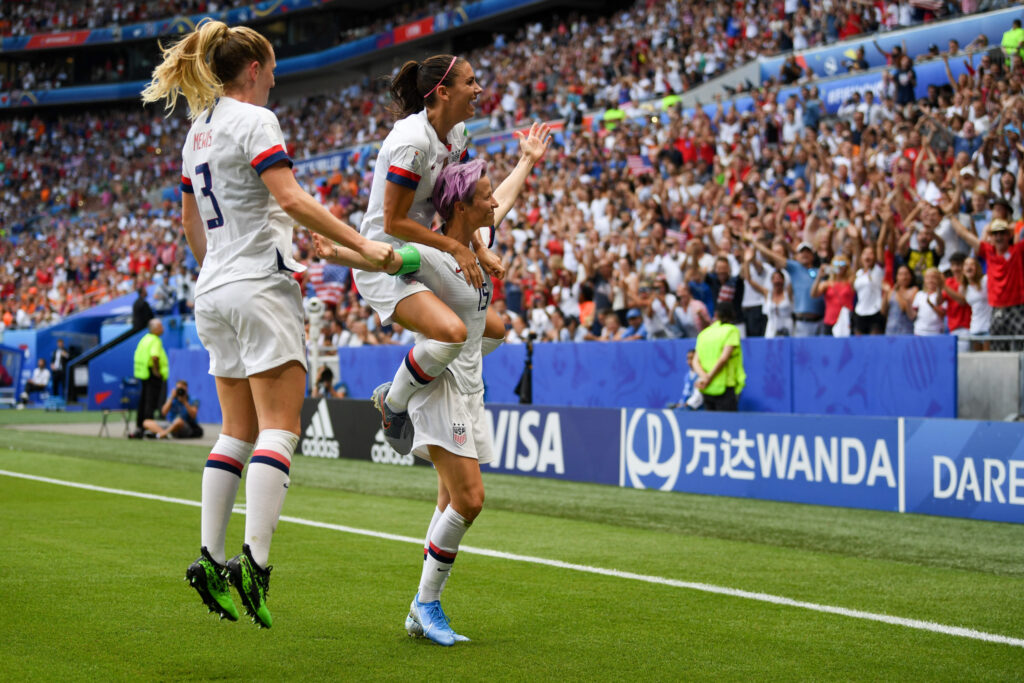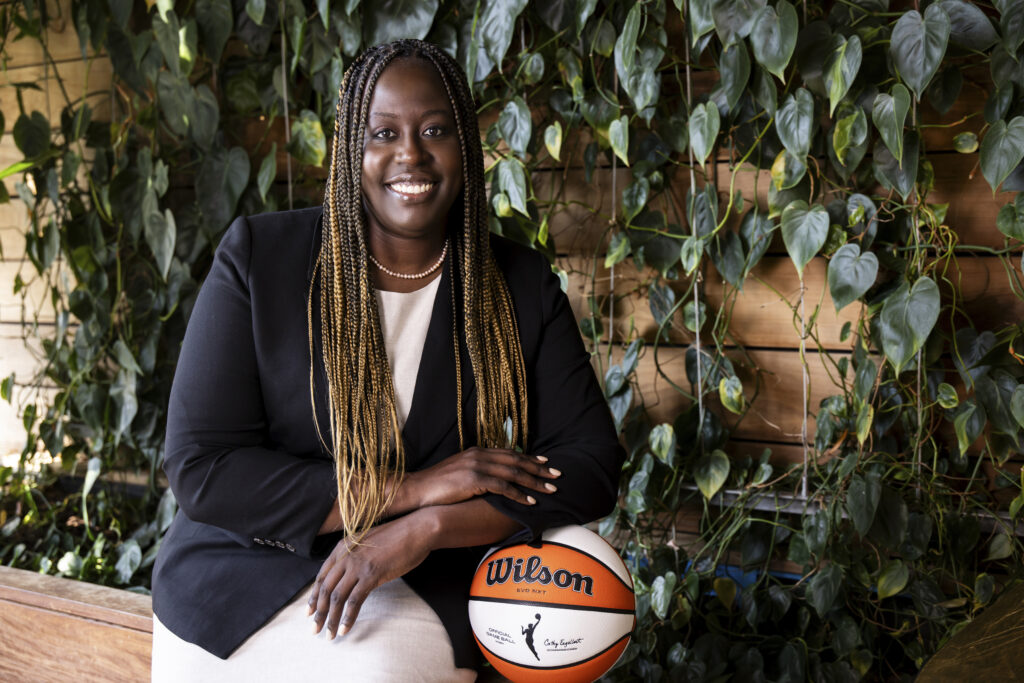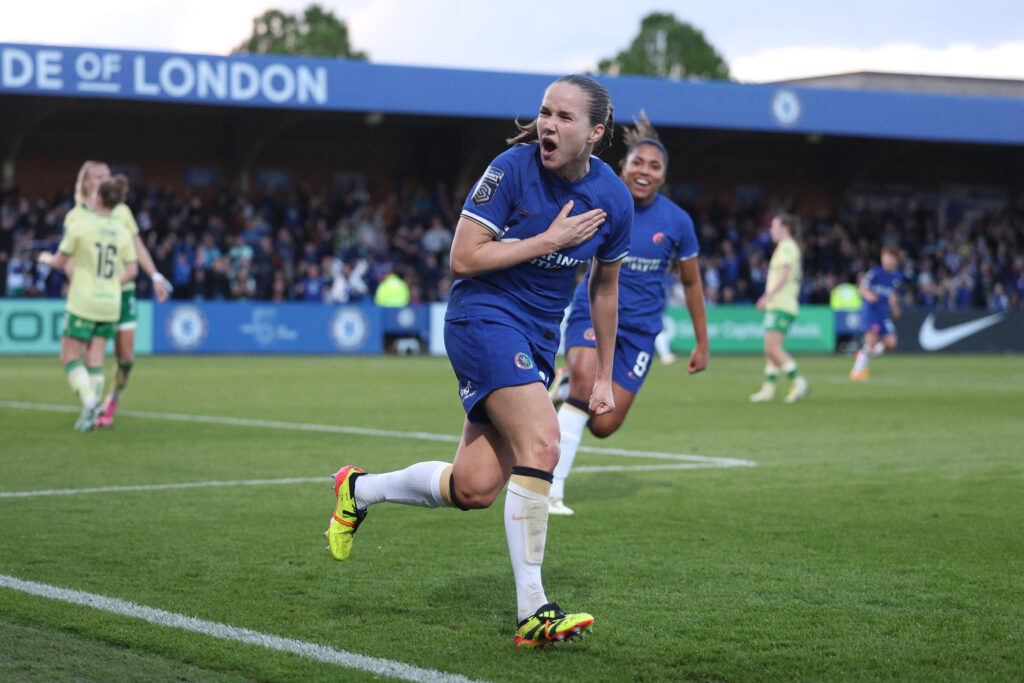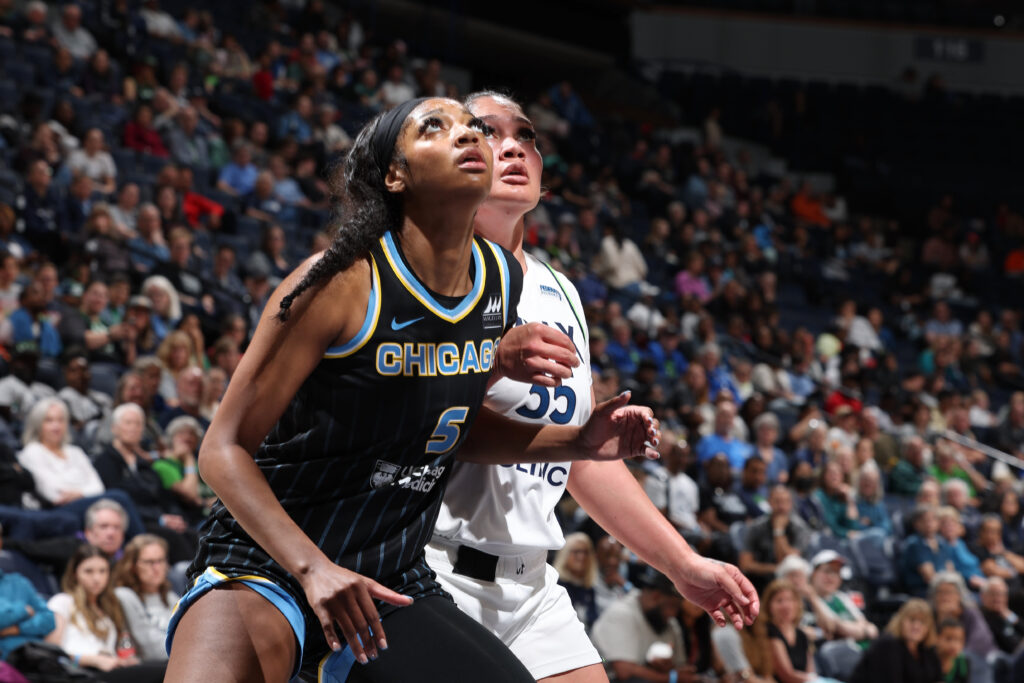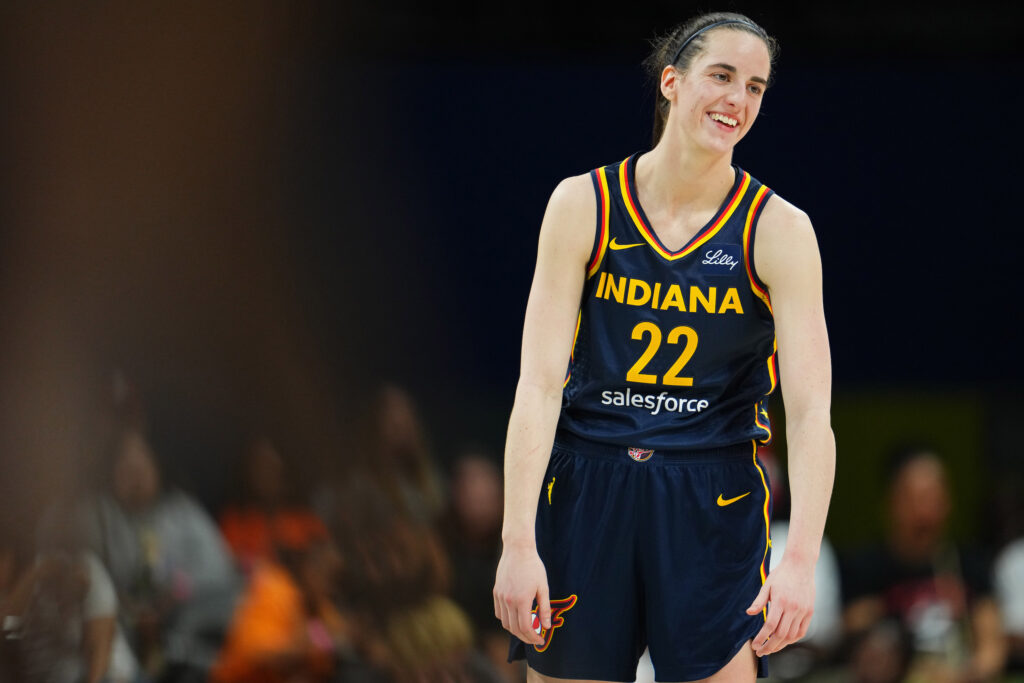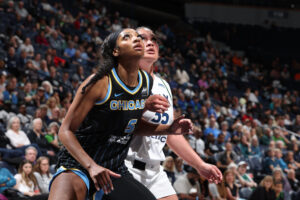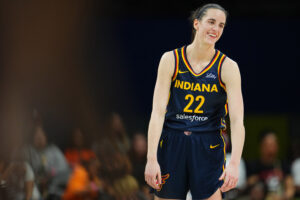With sports still on hiatus, the biggest upcoming showdown is between the U.S. women’s national team and their own federation.
On June 16th, the USWNT’s gender discrimination lawsuit will finally head to trial in what promises to be one of the defining moments in women’s sports history (yes, it’s that big of a deal). But while the lawsuit has been making headlines for over a year, there remains a surprising amount of confusion regarding exactly what’s being alleged, what’s being sought, and how U.S. Soccer intends to defend itself. There’s no easy way to summarize the case, so we won’t bother trying. Instead, we’ve prepared a comprehensive guide outlining what’s at stake and why the outcome is anything but obvious.
It should be noted that the trial was originally scheduled to begin on May 5th, but was pushed back due to the coronavirus pandemic. This delayed start theoretically gives both sides more time to reach a pre-trial agreement, especially given U.S. Soccer’s recent change in leadership. Then again, there was also tremendous pressure on U.S. Soccer to settle following last summer’s World Cup, and yet, nothing happened. Even if the two sides do choose to enter mediation once more, the arguments laid out below still provide the terms of the debate they’ll be having behind closed doors, rather than in front of a jury.
First, some background:
No matter one’s rooting interest in the upcoming trial, it should be clear that U.S. Soccer’s impact on women’s soccer has been undoubtedly net positive. Though it may not have much competition in this regard, there’s no question that within the global context, the federation has been the strongest institutional advocate for the sport for several decades running. Its long-term investment in the women’s national team is a big reason why the USWNT remains the most accomplished squad in the world.
In one of the federation’s legal filings, they even quote an earlier Megan Rapinoe praising the federation’s support for both women’s soccer in general and the national team specifically. (Indeed, rumor has it that there are still high-ranking U.S. Soccer executives who are privately furious that anyone would suggest the federation has hurt rather than helped the growth of women’s soccer.)
But even throughout their decades of successful partnership, tensions have always lingered between the team and the federation. Players have long complained that their support from U.S. Soccer, while superior to their opponents’ around the world, was and continues to be inferior to the treatment provided to their male counterparts at home. And while such complaints have often been kept beneath the surface, they’ve occasionally burst out into public view. Two such notable occasions involve the legendary 1999ers and an earlier version of this current USWNT.
In 2000, just months removed from their historic World Cup victory in Pasadena, the 1999 national team boycotted a tournament in Australia over inadequate pay. And in 2016, Megan Rapinoe, Alex Morgan, Carli Lloyd, Becky Sauerbrunn, and Hope Solo filed a pay discrimination complaint with the Equal Employment Opportunity Commission, again alleging pay disparity. In three years, this complaint went nowhere, leading the players to change course and file their current lawsuit in Los Angeles federal court.

The facts of the case:
-
The lawsuit was filed under the Equal Pay Act and Title VII of the Civil Rights Act on March 8th, 2019, International Women’s Day.
-
The USWNT are alleging that they have been subjected to “institutionalized gender discrimination,” and are therefore entitled to damages. In essence, they are asking for an increase in salary and significant back pay.
-
The lawsuit was granted class action status in November, meaning any woman who suited up for the USWNT going back to February 2015 is entitled to seek injunctive relief and back pay damages.
-
Carli Lloyd, Alex Morgan, Megan Rapinoe and Becky Sauerbrunn are the class representatives. (Hope Solo filed her own gender discrimination lawsuit against U.S. Soccer last August, after she was terminated by the federation.)
-
Trial is set to begin June 16th, pending any last minute settlement between the two sides and/or further COVID-19 delays.
What the USWNT is alleging:
The USWNT is trying to prove that, as employees of U.S. Soccer, they have been subject to institutionalized gender discrimination. In layman’s terms, they’re arguing that they’ve done the same work as the men’s team, but have been paid less because of their gender. That’s illegal, in case you were wondering, and now the national team is asking the law (i.e., the court) to step in and force U.S. Soccer to write them a check.
While the heart of the case is pay disparity, it’s important to note that the USWNT has to do much more than just prove they’ve been paid less than the men. U.S. Soccer could readily concede this point and still win the case if they can successfully argue that either such inequity is the result of anything but misogyny, or that the two national teams perform fundamentally different jobs.
This second line of reasoning was famously and disastrously pursued in a recent legal filing that claimed that the USWNT had less responsibility and skill than their male counterparts — hence, they supposedly do a different job. The blatant misogyny and disrespect of such comments sparked immediate outcry, and eventually led to the resignation of then-U.S. Soccer president Carlos Cordeiro.
The big thing to take away from all this is that the USWNT has a higher burden of proof, as they have to prove they do the same job as the men, are still paid less, and it’s because of their gender. U.S. Soccer, on the other hand, only needs to refute one of these claims, by proving either the two teams don’t do the same job, the women aren’t always paid less, or that when they are, it’s not because of their gender.

What the USWNT wants:
In short: better pay and restitution (i.e. back pay). The first of these two demands has received the majority of media coverage, in large part because the outcome is easy to measure: either U.S. Soccer pays its national teams more or less the same, or it doesn’t.
Back pay is a trickier calculation, but an expert witness called in by the USWNT put the initial estimate at $67 million. Such a figure was reached by calculating what the women would have earned for their past performances if they were operating under the same compensation structure as the men. Naturally, U.S. Soccer had some problems with the math, most notably the fact that it included World Cup bonuses, which are set and paid for by FIFA.
And this $67 million is only the beginning: the players are also seeking damages including attorney fees as well as punitive damages to deter future discrimination. This aspect of the case has been wildly under-discussed (fans at the World Cup, after all, were chanting “equal pay,” not “back pay”). Raising the USWNT’s wages is one thing. Forking over an additional $67 million+ is another thing entirely, and if you’ve heard U.S. Soccer complain that this lawsuit could bankrupt them, this is what they’re referring to. They have enough money to pay the women’s team more. They likely don’t have enough to pay them back without making serious cuts to their operations, especially their youth development efforts.
What the USWNT will argue:
They make less money for doing the same job as the men:
-
Given their respective pay structures (more on this in a second), if both the women’s and men’s teams won 20 games in a row, a USWNT player would earn $28,333 less, or about 89% of what her male counterpart would make.
-
Prior to 2017, when the USWNT negotiated a new CBA, these numbers were even more skewed: a top player on the women’s team would have earned $99,000 for those 20 wins, or 38% of the $263,320 of a men’s team player. (Remember, this lawsuit includes players who suited up for the USWNT going back to 2015).
-
Then there’s the question of World Cup payouts: in 2014, the men’s team was paid $5.375 million in World Cup bonuses for being eliminated in the round of 16, while the women were paid $1.725 million for winning the whole thing in 2015 (more on this later).
In addition to unequal pay, the team is also subject to unequal support:
-
From 2014-2017, the women played 21% of their domestic games on artificial turf versus 2% for the men.
-
And in 2017, the USSF chartered at least 17 flights for the men’s team. For the women’s? Zero.

Lastly, in recent years, the women’s team has (probably) brought in more revenue to U.S. Soccer than the men’s. According to the Wall Street Journal, between 2016 and 2018, the women’s games earned $50.8 million in ticket sales revenue while the men brought in $49.9 million.
Ticket revenue only accounts for a quarter of U.S. Soccer’s total operating revenue. The rest comes from sponsorships and broadcasting rights, which U.S. Soccer sells as a bundled package for both teams, making it impossible to know how much each contributes. Still, it’s not hard to imagine that the USWNT is pitching in more than their fair share. The final from last summer’s World Cup was the most watched soccer game in the U.S. since the 2015 WWC final. And during the 2019 tournament, according to Nike, the USWNT home jersey became the number one single-season jersey ever sold on Nike.com. These disparate facts alone can’t definitively prove that the USWNT is bringing in more revenue than the men’s team, but then again, neither can they prove the men are doing better.
Anyone who tries to dismiss the USWNT’s case by blindly citing “the numbers” hasn’t done their homework. To be blunt, the job of a national team is to make money for their federation. And though we’re missing some important numbers, the ones we do have suggest that the women’s team is, at worst, bringing in revenues similar to the men’s.
What makes this complicated:
Technically speaking, equal pay between the national teams isn’t currently possible given the differences between each team’s collective bargaining agreements. This is a key point of U.S. Soccer’s defense, as they have continually made the claim that rather than institutionalized misogyny, it’s primarily structural differences between the two CBAs that account for the unequal pay.
Soccer players’ pay is fairly complicated, but the basic breakdown between the two CBAs is as follows: the women have a guaranteed base salary and are eligible for performance based bonuses (i.e. suiting up and winning games), whereas the men have no base salary and only receive performance bonuses for playing and winning games. The women’s agreement also includes medical and dental insurance, paid child-care assistance, paid pregnancy and parental leave, and severance benefits — benefits that U.S. Soccer says are not provided to the men’s national team. (As you can imagine, there’s disagreement between the sides as to how much these benefits should factor in.)
This is where things get tricky: the reason the men can afford a riskier, but potentially higher-paying contract (i.e. one without guarantees, and only bonuses) is because their MLS clubs already give them a significant salary, which also includes all the benefits that U.S. Soccer provides the women’s team. And while they won’t publicly state this for fear of tarnishing the NWSL, it’s fairly obvious that the USWNT felt pressured to negotiate a “safer” CBA (with guaranteed salary + benefits) because their NWSL clubs couldn’t promise them the financial security they needed.
But it gets even more complicated: U.S. Soccer pays the NWSL salaries of USWNT members, and is (for at least another year) essentially managing the league. This fact could be used against U.S. Soccer: if they invested more in the NWSL, the USWNT could afford a stronger starting position when negotiating their national team contracts. But this same fact could also be used in U.S. Soccer’s defense, as it makes it harder to accuse the federation of gender discrimination when they’re paying double salary for each of their national team players.

Does U.S. Soccer have a case?
There are multiple reasons to think U.S. Soccer could walk away from this case with their bank accounts intact. For starters, they’ve made significant efforts in recent years to address many of the issues raised by the national team. The USWNT hasn’t played a match on artificial turf since 2017, and U.S. Soccer has also begun to charter flights between games. Other inequities, ranging from hotel accommodations to meal money, have also been rectified. Such gestures aren’t world-changing, but they could make it difficult for the national team to prove that their federation is actively discriminating against them because of their gender.
But the biggest reason U.S. Soccer might walk away winners? They’re not the only party at fault.
For example, consider the differences in World Cup payouts. Clearly, everyone needs to do more to close the pay gap between the two tournaments: that includes sponsors, broadcast partners, FIFA, various national federations around the world, and yes, U.S. Soccer. But the simple fact is that at this moment, FIFA unilaterally controls the prize money, and given that the men’s tournament generates close to $6 billion in revenue versus $130 million for the women’s, it’s no surprise that FIFA chooses to pay out significantly higher bonuses to the men’s teams. That won’t change until every stakeholder ups their investment in the women’s tournament, and while U.S. Soccer is certainly one such stakeholder, it’s going to be hard to find them solely responsible for the current discrepancy in prize money. (On a positive note, FIFA is apparently planning to double the prize money for the 2023 Women’s World Cup.)
Every piece on the gameboard is interconnected. If the NWSL had more investors and were a more financially stable league, the USWNT could negotiate for riskier contracts back-loaded with performance bonuses.
The fact is that this case only has one defendant in court, but the criticisms being made reach far and wide. The USWNT is demanding that women’s soccer be given its due respect. And while U.S. Soccer has a role to play in both growing the World Cup and stabilizing the NWSL, the question now is whether the federation will be found liable for failing to live up to its duties, or if it will be spared as simply one of many institutions that needs to improve.
But let’s be honest, the USWNT may have already won
There’s a sense in which this case has already been decided. While you shouldn’t trust media narratives to accurately predict the fate of any case in court, they’re a pretty decent barometer of what the public is thinking. And right now, just about everyone is on the side of the USWNT, especially after the fiasco leading up to Cordeiro’s resignation.
And though the court of public opinion can’t force U.S. Soccer to write a check to its national team, it can continue to put pressure on the federation to step up their efforts, no matter what a jury in Los Angeles decides. Regardless of the case’s outcome, fans and commentators will be pressing U.S. Soccer to up their support for the USWNT, especially if, as seems likely, they continue to achieve at a significantly higher level than the men’s team.

In suing their own employer, the USWNT players have also become the de-facto face of a broader fight for gender equality both in sports and the American workplace. In recent years, athletes in other sports, including WNBA players and the U.S. women’s hockey team, have reached out to the USWNT, asking for advice regarding their own respective battles for improved equity and playing standards. And while the gender pay gap won’t be closed overnight, either in sports or the economy more broadly, the USWNT have done us all a favor by dragging the fight out into the light. Their willingness to openly and boldly assert their value and air their criticisms has opened the conversation to more urgent and pointed rhetoric. They’ve cleared the airways of vague, inoffensive chatter by clearly stating their opinions and demands. And in doing so, they’ve radically enlarged our collective understanding of what athletes can do when they apply their ambition and celebrity to a greater social cause.
The case is too complicated to call ahead of time, and yet it already feels historic. The USWNT are more than just a soccer team, and what’s being debated is far more than any specific dollar amount. This case has become a referendum on women’s sports, and both the players and U.S. Soccer know it. For any other team, that could be too much to bear. For the USWNT, this is exactly what they signed up for.
